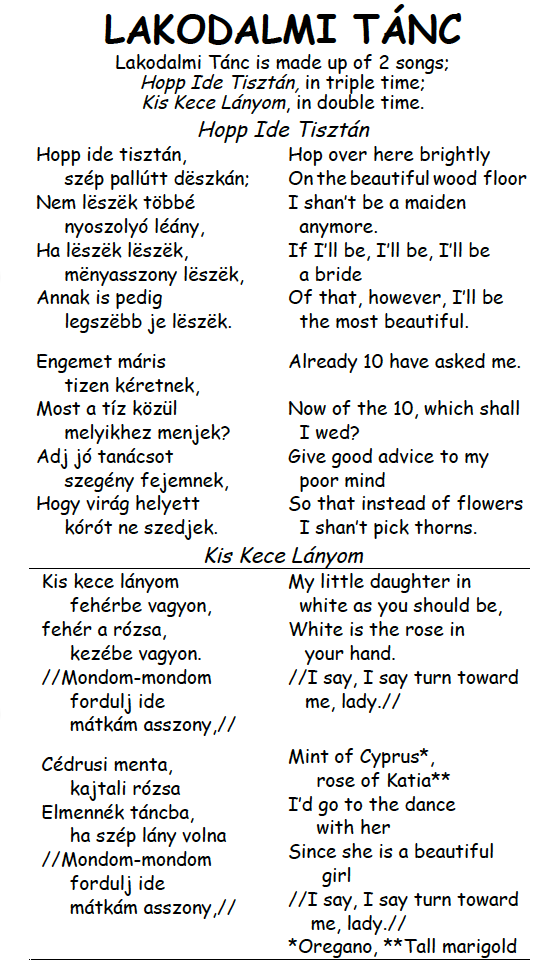*2nd Generation dance. A dance that developed and was disseminated in a non-traditional way. 2G dances are specific – have a fixed format designed to correspond with the arrangement of a particular recording., whereas 1G dances are generic – have a shorter sequence that works with live music – where many different songs are played and arrangements vary according to the tastes of musicians and dancers. For more on the differences between 1st & 2nd G dances click here.
Lakodalmi Tánc (LAH-koh-dahl-mee tahns) literally means “wedding dance”. Hungarian weddings had many occasions for singing and dancing, but this particular Lakodalmi Tánc was choreographed by Andor Czompo to signify the time after the wedding ceremony when the bride’s female attendants removed her elaborate headdress. Hair was a potent symbol of fertility and sexuality, and unmarried girls wore their hair exposed to advertise their availability for marriage. A married woman was not supposed to show her hair to any man but her husband, so the ceremony itself was the last time her hair was to be seen in public, when it became part of an elaborate crown. See below starting at 4:04
After the ceremony, the girls removing the crown sang solemn songs, reflecting the transition from “carefree” girlhood to the responsibilities of wife and mother. The two songs Czompo chose for his “Lakodalmi Tánc” were Hopp ide tisztán & Kis kece lányom, songs that were likely sung by girls removing headdresses. What is unlikely is that the girls were dancing this choreography while trying to remove the headdress.

Czompo interwove the two songs into an instrumental medley, blended traditional Hungarian steps into a pleasing choreography, et voila!

